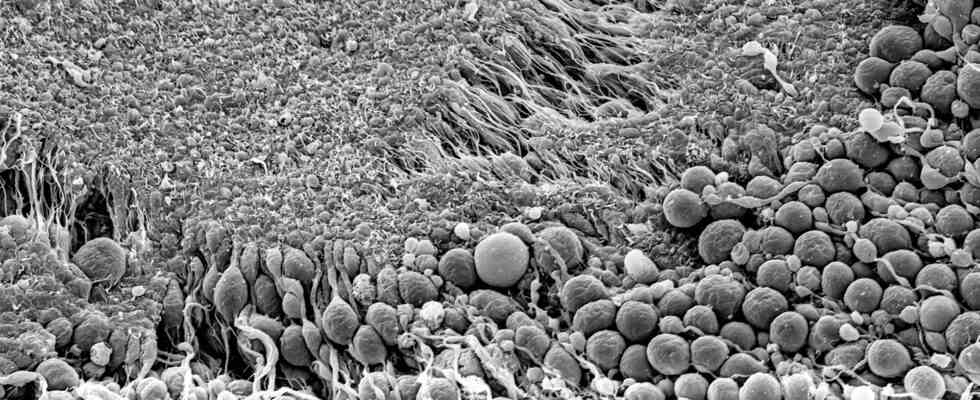Status: 10/18/2022 4:19 p.m
In order to better understand the human brain, research is being carried out worldwide on so-called brain organoids, which are cultivated from human tissue. This raises new questions in medical ethics.
It sounds like something out of a science fiction film: researchers grow human brain tissue in the laboratory, which they even implant in animals such as rats, thereby controlling their behavior. A meaningful advance? For the first time, the Leopoldina has extensive research with brain structures from the laboratory position based.
Research without animal testing
The search for therapies for neurological diseases such as epilepsy is arduous. Researching how the human brain works is not easy: Only limited knowledge can be gained from clinical studies. For example, you can measure brain waves, but you cannot see exactly which metabolic processes are taking place in the brain in certain clinical pictures. Animal experiments are also controversial and often inaccurate, since there are too many differences to humans.
Research is therefore increasingly concentrating on so-called organoids. These are stem cells that are obtained from human skin, for example, and cultivated in the laboratory in such a way that they replicate entire organs. They function similarly to actual organs and can be cultured in nutrient solutions.
Scientists hope to use brain organoids to gain insights into the development and function of the human brain. Neurological and psychiatric diseases could also be better understood and completely new therapies could be researched. It is particularly about complex diseases such as Alzheimer’s and autism.
“No reason to regulate these experiments”, Jürgen Knoblich, molecular biologist, on research on brain cells
tagesschau24 1:00 p.m., 18.10.2022
Boundaries of Organoids
But even organoids have their limits: How an organ interacts with other bodily functions, for example, cannot be replicated in the laboratory. In addition, the lifespan of organoids is limited.
Transplantation of organoids into a living organism would circumvent these limitations. It is only recently Researchers succeeded for the first timeto integrate a human brain organoid into a rat brain. What’s more, the nerve cells integrated into the rodents’ brains to such an extent that they were able to influence their behavior.
Controversial chimeras
This creates a so-called chimera – an organism consisting of cells with different genetic makeup. In medical ethics, chimeras are controversial – especially when it comes to a combination of humans and animals.
Questions arise about the limits and consequences of “humanizing” animals, and whether they need special protection. It is unclear whether such experiments could possibly change the animals’ cognitive abilities and whether they cause the animals suffering.
Leopoldina takes a stand
The National Academy of Sciences Leopoldina has now issued a statement on the use of brain organoids. “It is extremely important that the public’s concerns about this type of research are taken very seriously and discussed very broadly and impartially,” emphasizes Professor Jürgen Knoblich, who contributed to the statement tagesschau24.
As far as the medical benefit is concerned, the authors of the statement see great potential in research with brain organoids. We are currently still very far away from imitating human consciousness. However, the field of research is developing so rapidly that research with brain organoids may have to be regulated by a special ethics committee in the future.

